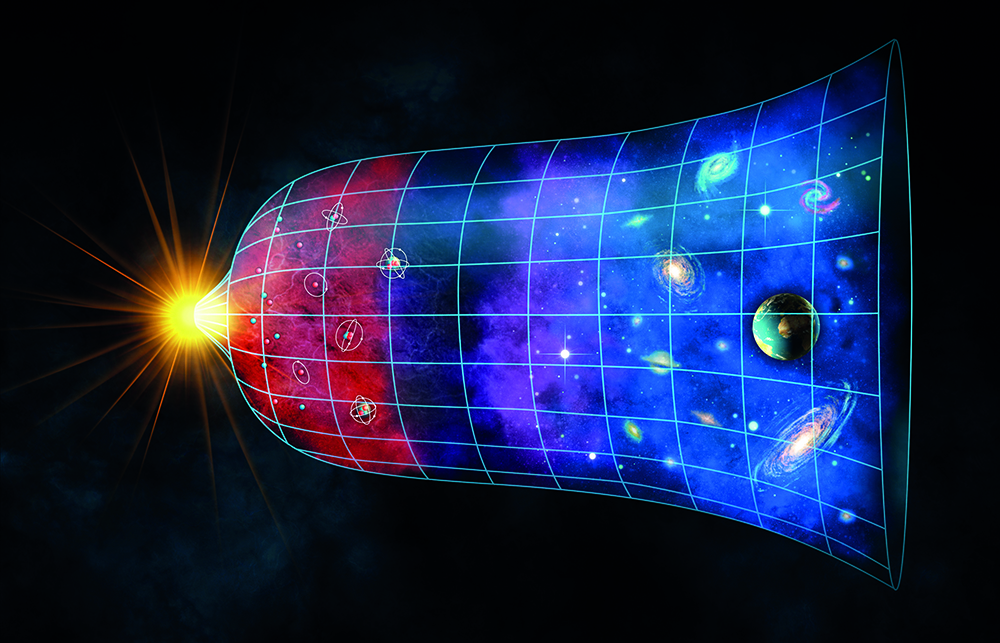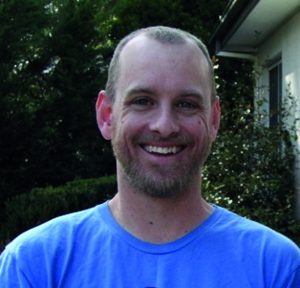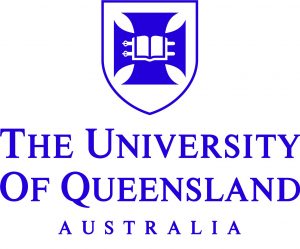Dr Peter Evans – Retro-Causality: Unravelling the Mysteries of Quantum Cosmology
Despite many years of research aiming to unite quantum mechanics with cosmological theories, researchers in fields across physics and philosophy remain in disagreement about a solution. Now, Dr Peter Evans at the University of Queensland sheds new light on the debate. He argues that on quantum scales, the idea of cause and effect does not need to follow the one-way passage of time, as we understand it. If correct, his theories could dispel some of the most puzzling mysteries of quantum theory – a significant step forward in understanding the true nature of the universe.
Quantum Cosmology
For decades, scientists and philosophers alike have struggled to reconcile our current understanding of the nature of the universe with the theory of quantum mechanics. This broad field, known as ‘quantum cosmology’, encompasses a wide variety of efforts to unite quantum behaviours, which unfold on the very smallest of scales, with processes such as the universe’s accelerating expansion.
Such a goal is a mammoth undertaking. Despite the fact that our current theories of quantum mechanics and cosmology each work well on their own, they still appear to be completely incompatible with each other. So far, no one has come close to merging them into a single theory.
Dr Peter Evans at the University of Queensland considers a different angle to the problem: what if events that happened in the past could have been caused by events in their futures? The idea is clearly incompatible with our current idea of spacetime, in which time progresses in one direction. However, Dr Evans argues that given a conceptual framework built from the right background assumptions, his ideas could answer some of the most pressing questions posed by quantum cosmology. To justify these claims, he has drawn together a variety of concepts first devised in previous studies, in fields including cosmology, quantum mechanics and philosophy.

Redefining the Cause and Effect Chain
Philosophers have incorporated the idea of cause and effect into their arguments for many centuries – many of them using it to justify their beliefs about the origins of the universe. The concept describes how an event cannot happen unless it has been triggered by another event, which happened in its past. Today, the concept of cause and effect continues to be important in quantum mechanics, where it has been given the name ‘causality’. In this context, the idea demands that even on quantum scales, one event must always have been caused by another.
Contrary to well-established philosophical theories, Dr Evans argues that in quantum mechanics, chains of events do not necessarily need to play out within our limited, one-directional view of the flow of time. Where conventional physics experiments ultimately rely on this more conventional concept, his work is based on the possibility of backwards-in-time, or ‘retro’-causality, where quantum mechanics allows for the occurrence of an event that has been triggered by another event occurring in its future (from our perspective).
Many researchers continue to discredit retro-causality as a flawed idea, since many scientific theories are fundamentally based around the idea that time is one-directional, and cannot flow backwards. If retro-causality did turn out to be true, they would argue that many of the fundamental laws of the universe as we currently understand it would need to be completely re-written. However, Dr Evans has set out to prove that retro-causal influences are not only possible, but could also provide a variety of meaningful solutions to the challenges faced by researchers of quantum cosmology.
Considering Retro-Causal Influences
One of the biggest puzzles currently faced by quantum theorists is the undeniable observation of ‘action at a distance’ interactions, where certain events must have been triggered by others happening simultaneously. As Einstein clearly showed, this shouldn’t be allowed to happen, since the universe has a fundamental speed limit – the speed of light – which must mean that an event can’t happen at the same time as the event it has been caused by.
In addition, quantum theory appears to suggest that objects on quantum scales can only be ‘real’ when they are observed; otherwise, they only exist as a cloud of potential positions in space and time. Many theorists argue that this blurry idea of reality can’t really represent what is actually happening, and that it is simply unscientific to say that an object doesn’t exist simply because it isn’t being measured.
As Dr Evans explains, these types of long-standing problems could be solved if quantum mechanics allowed the chain of cause and effect, which underlies the behaviour of the universe, to be not restricted to a one-way flow of time. ‘My research considers the possibility of retro-causal influences playing a role in solving some of the mysteries of quantum theory,’ he says. ‘Some of these quantum peculiarities, such as apparent action at a distance or the definite reality of the quantum system between measurements, obtain a natural and intuitive interpretation when considered as arising as a result of retro-causal influences at the quantum scale.’ Dr Evans believes that if certain perhaps unorthodox background assumptions are made when stating the nature of the universe, there is nothing to say that retro-causality isn’t possible.
‘My research considers the possibility of retro-causal influences playing a role in solving some of the mysteries of quantum theory’

Conceptual Framework for Retro-Causality
The first of these unorthodox background assumptions is called the ‘block universe’ model, which states that the universe exists as an unchanging four-dimensional block. Four-dimensional spacetime is a widely used concept amongst cosmologists, describing how the three-dimensional space in which we exist is continually changed by the fourth dimension, which we know as time. Recently, some theorists have argued that if the universe exists as an unchanging four-dimensional block, time must not be some irreversible concept; rather, everything that will ever happen is essentially happening simultaneously. Within this framework, retro-causal influences may be allowed to occur from our perspective.
The second assumption is named the ‘interventionalist account of causation’, which describes how certain events can be caused by other events, but only if the variable responsible for the first event was changed in a certain way. This is in contrast to the conventional idea that all events must have been triggered by past events to which they are linked, no matter the nature of the variable change that gave rise to the first event. If connections between events really are more exclusive, retro-causal influences could in fact become a necessary property of the nature of the universe.
To adopt each of these ideas, Dr Evans argues that we would need to let go of our current view of the past as something we can know everything about. Instead, he says, we should adopt a more flexible idea of time. If these background assumptions are made, he believes that retro-causality can be seen as a feasible solution to many of the problems posed by quantum cosmology. ‘The notion of retro-causality cannot be ruled out on analytic grounds, and so comprises a viable conceptual framework for attempting to understand quantum phenomena,’ he explains.

Agent-Relative Causality
Having established this groundwork, Dr Evans then aimed to describe the conditions in which retro-causal events would occur. He has concluded that in order for his ideas to work, a highly unorthodox piece of philosophy is needed: we would need to view causality as an ‘agent-relative’ idea.
In this context, an ‘agent’ is a causal actor in the world, which we certainly take humans to be. We would probably take certain advanced robots, and perhaps even intelligent extra-terrestrial lifeforms, to be agents also. Viewing causality as an ‘agent-relative’ notion is counterpoised to the idea that causality is an objective feature of the world – out there independently of the causal players in the world, and existing even if there were no humans. Agent-relative causality implies that there is some key ingredient to the way that agents interact with the world that is integral to what we think causality is fundamentally.
By extending this notion to quantum causality, Dr Evans claims that some of the mysterious behaviours of quantum systems would begin to look like a symptom of the agent-relative nature of causality, and not as some ad hoc injection of the role of the agent in quantum mechanics, as one finds in the measurement problem.
‘Causality can be understood as an agent-relative notion, thereby highlighting the fact that the agent is able to play a significant part in the interpretation of quantum theory, without the postulation of any extra agent-centric phenomena,’ Dr Evans describes. ‘That is, we don’t need to specify any special new rules that agents interacting with quantum systems need to obey; it’s the fundamental causal rules that agents necessarily obey that bring about the peculiar quantum behaviour.’
If this idea is correct, the task of researchers studying the nature of causality would become far easier. Ultimately, it could break down the mystery of processes including action at a distance, and the reality of quantum objects when they are not being observed.
A New Take on Quantum Cosmology
Quantum cosmology has now become one of the most hotly debated fields among both physicists and philosophers, with very little agreement being reached amongst researchers over the very nature of our reality. In this stagnant academic environment, the approach taken by Dr Evans could prove to move the discussion along from its current deadlock – dispelling the idea that quantum observations are not consistent with our current understanding of causality.
Ultimately, this could allow for important new insights into the nature of the universe, bringing researchers one crucial step closer to reconciling quantum mechanics with the most fundamental theories of cosmology.
Reference
https://doi.org/10.33548/SCIENTIA401
Meet the researcher

Dr Peter Evans
School of Historical and Philosophical Inquiry
University of Queensland
St Lucia
Queensland
Australia
Dr Peter Evans was awarded his PhD from the University of Sydney in 2011, for a thesis entitled A Study of Time in Modern Physics. After graduating, Dr Evans joined the University of Queensland in 2014, where he now works as a Discovery Early Career Research Fellow of the Australian Research Council (ARC), pursuing the long-term task of ‘a philosophical exploration of simulating and controlling the quantum world’. His main research interests include philosophy of physics and science, quantum foundations, and metaphysics. He has already achieved several prestigious awards to pursue his work, including the ARC Discovery Early Career Researcher Award, which he received in 2017.
CONTACT
W: https://researchers.uq.edu.au/researcher/10586
FUNDING
Australian Research Council (ARC)
FURTHER READING
PW Evans, Quantum Causal Models, Faithfulness, and Retrocausality, The British Journal for the Philosophy of Science, 2018, 69, 745–774.
PW Evans, S Gryb, KP Thébault, Ψ-epistemic quantum cosmology?, Studies in History and Philosophy of Science Part B: Studies in History and Philosophy of Modern Physics, 2016, 56, 1–12.
PW Evans, Retrocausality at no extra cost, Synthese, 2015, 192, 1139–1155.

Creative Commons Licence
(CC BY 4.0)
This work is licensed under a Creative Commons Attribution 4.0 International License. 
What does this mean?
Share: You can copy and redistribute the material in any medium or format
Adapt: You can change, and build upon the material for any purpose, even commercially.
Credit: You must give appropriate credit, provide a link to the license, and indicate if changes were made.
More articles you may like
Grandmothers: Innovation Through Tradition
Grandmother Project – Change through Culture (GMP) is an organisation dedicated to documenting the role of grandmothers and demonstrating the effectiveness of grandmother-inclusive strategies in improving the health and well-being of women, children, and adolescents. GMP’s groundbreaking work challenges conventional wisdom to transform community-based interventions in Africa and beyond, harnessing a powerful but often overlooked resource: the wisdom and influence of grandmothers.
Dr Robert Larkin | Cultivating Change to Improve Soil Health and Increase Potato Yield
Environmental quality and food production are facing the pressing challenges of climate change and global population growth. Dr Robert Larkin from the United States Department of Agriculture-Agricultural Research Service (USDA-ARS) and a team of plant scientists developed and tested a range of crop management systems to help overcome these compounding challenges. Their work is improving soil health and increasing the yield of potato crops, contributing to the future food security of nations.
Professor Giorgio Buttazzo | Artificial Intelligence and a Crossroads for Humanity
Where do we stand with artificial intelligence? Might machines take over our jobs? Can machines become conscious? Might we be harmed by robots? What is the future of humanity? Professor Giorgio Buttazzo of Scuola Superiore Sant’Anna is an expert in artificial intelligence and neural networks. In a recent publication, he provides considered insights into some of the most pressing questions surrounding artificial intelligence and humanity.
Dr Ralf Adam | New Technologies Shaping the Future of Oral Hygiene
Understanding the efficiency of various toothbrush technologies is essential for achieving optimal oral health. Dr Ralf Adam, who leads a dedicated team at Procter & Gamble in Germany, is keen to investigate the complexities of these technologies. His team have provided new insights into the best toothbrush types for plaque removal and the maintenance of gum health. By highlighting the importance of informed oral care decisions and ongoing investigations, this vital research works towards ensuring everyone can achieve a brighter, healthier smile.




